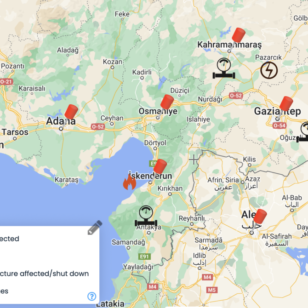Over the past several years, we’ve been warned to keep careful and stay at home, while the Covid19 pandemic transformed the way we travel, shop, and socialize. We’ve grown interested in virus evolution and the stability of our health-care infrastructure. Other security problems, meanwhile, have taken a back seat. We have naturally become less anxious about prospective terrorist strikes and even normal petty crime – after all, we’ve grown accustomed to limiting our socializing. But we’ve been back to normal for some time now.
Furthermore, recent developments in the Middle East and their consequences for European stability (you may read more here) have exposed a threat that has never completely gone away: the worldwide threat of terrorism is at the forefront of our daily concerns.
Panic does not help. Ultimately, that is terror, and if we subdue to the general anxiety around traveling, their aim is reached. Terrorists win if we stop traveling and going about our business.
After watching the distressing news stories from France and Belgium during the last week, we realized we may be facing further instability – not only in political and socio-economic terms, but also in what regards personal security as the threat of terrorism seems to be growing in Europe, and beyond. There is, however, a way for communities to overcome terrorism.
Individuals may protect themselves by practicing situational awareness, a process that allows anyone to notice a threat early on and take precautions to avoid it. In a nutshell, it requires you to be aware of your surroundings and identify potentially risky circumstances. As a result, it is not something that can be practiced only by highly trained government agents or corporate security services professionals, but rather something that anyone can do. It is more of a reaction to the understanding that a threat exists.
Ignorance, denial, complacency, or fully tuning out of your surroundings in a public location obviously reduces your odds of recognizing a threat. Paranoia or obsessive concern about your safety, on the other side, is as hazardous – we can’t live in dread and aren’t created to. In other words, our bodies’ “flight or fight” reaction is only activated in an emergency, but it is shut off by a steady stream of stress, which can lead to mental and physical exhaustion. This is why, in the current environment, you must be aware of potential risks while simultaneously maintaining a balanced, calm degree of situational awareness – you will notice if something out of the ordinary occurs around you and will most likely be able to react to it.
What are the warning indicators you should look out for?
FIRST, keep in mind that practically every criminal act (from a wallet grab to a terrorist bomb) involves some level of pre-operational surveillance, and all criminals are vulnerable at that time – this is why many attacks never take place and security forces end up apprehending the criminals.
SECOND: Several principles can assist you in identifying potential risks. There are various sources of information on the issue that we have chosen for you to read below, but in a nutshell, remember one (friendly) acronym: TEDD – time, environment, distance, demeanor.
Explainer: If you witness someone acting abnormally (the poor demeanor) and continually in time, in the same or specific (but different) situations, at the same or specific (even if varying) distances, you may assume something is wrong. So, most importantly, in the equation above, look for “poor demeanor”: if another individual’s behavior is plainly suspicious, act by avoiding the situation in which that person finds himself/herself. In other words, if you notice or suspect something unusual or strange, take all precautions to protect yourself.
Wearing unseasonably warm clothing, displaying odd bulges under clothing or wires protruding from clothing, unnatural sweating, unnatural mumbling and intense stare, attempting to avoid security personnel are just a few of the oddities that have been observed about terrorist attackers over time.
3) THIRD: Always check out the most recent travel warnings issued by your national authorities for the countries to which you are intending to travel, as well as those issued by transit nations or other third countries. While terror levels in some European countries have decreased, it is critical to retain a relaxed situational awareness anytime in public places and not let paranoia and fear to take away the joy of life.
We have selected several resources for you to read more about situational awareness:
- BEFORE; DURING AND AFTER THE TRIP, TIPS available at: https://www.travel-security.ch/
- WHAT TO LOOK OUT FOR: https://www.met.police.uk/advice/advice-and-information/t/terrorism-in-the-uk/staying-safe-from-terrorism/
- Safety Advice video. Metropolitan Police: https://www.counterterrorism.police.uk/safetyadvice/
- Antiterrorism Individual Awareness Tips. Army War College: https://www.armywarcollege.edu/iwatch/downloads/cards/Individual_Awareness_Tips.pdf
- Worldwide Caution. US Department of State: https://travel.state.gov/content/travel/en/traveladvisories/traveladvisories/worldwide-caution.html
- Practice situational awareness before traveling. US Army: https://www.army.mil/article/47467/practice_situational_awareness_before_traveling
- Protect yourself: Practice situational awareness. Official United States Air Force Website: https://www.lakenheath.af.mil/News/Article-Display/Article/299827/protect-yourself-practice-situational-awareness/
- Safety and security abroad: How to increase your situational awareness. Aetna International: https://www.aetnainternational.com/en/about-us/explore/living-abroad/expatriate-life/safety-security-abroad.html



